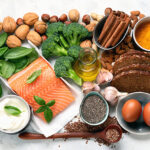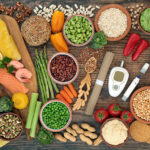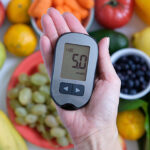Your Questions Answered
‘I’ve been attempting to use the glycemic index to help me consume the correct foods after intense workouts. But, I’m terribly confused as various articles on the subject sometime seems to contradict one another. Should I be having high or low GI carbs?’
![[PIC]](https://glycemicindex.com/blog/2008/july08/emma125.jpg)
Dr Emma Stevenson
GI News invited Dr Emma Stevenson from Northumbria University’s School of Psychology and Sports Sciences to answer this one: ‘The available literature is confusing and there are surprisingly few well controlled, scientific studies investigating the effects of high GI and low GI carbs on recovery from intense exercise. The early studies showed that consuming high GI carbs during recovery from exercise increased muscle glycogen resynthesis (over both a short recovery period of about 4 hours and over 22 hours) compared to consuming low GI carbs during recovery. This is not surprising as rapid muscle glycogen resynthesis requires a high insulin concentration and a high glucose concentration – both of which are observed following consumption of high GI carbs. More recently, my colleagues and I have shown in our studies that exercise capacity was improved in endurance athletes and following a low GI recovery diet over 24 hours as the low GI carbs allowed the athletes to burn more fat as a fuel and therefore possibly spare muscle glycogen. The same group also showed no differences in intermittent exercise performance in sports/games played when they consumed a high GI or low GI diet over 24 hours.
My advice based on our studies would be that if your recovery time between sessions is greater than a few hours then the most important thing is to consume sufficient carbohydrate and low GI carbs may provide the additional benefit of allowing your body to use fat as an energy source for a longer period after exercise. If your recovery time between sessions is short (i.e. less than 4 hours) then high GI carbs can provide a rapid source of glucose and result in a rapid insulin response that can speed the recovery of muscle glycogen. I would also recommend consuming a source of protein (milk, yogurt) during recovery to aid muscle recovery and reduce soreness.’
‘I am keen to bake my own low GI bread. I have found a recipe (it is one of Anthony Worral Thompson’s) that says: ‘This bread has an extremely low GI as the tough outer coating of the seeds makes them harder to break down.’ It has: ‘325 g strong wholegrain flour, 25 g wheatbran, 1 sachet fast action yeast (6 or 7g), 25 g sunflower seeds, 25 g sesame seeds, 25 g pumpkin seeds, 25g linseeds, 12.5 g muscovado sugar, half teaspoon salt, 1 tablespoon vegetable oil’. This is cooked at 200ºC for 40 minutes or so. How can I be sure it is low GI?’
![[PIC]](https://glycemicindex.com/blog/2008/july08/bread175.jpg)
‘We are often asked about low GI bread recipes. Sadly, we don’t have one ourselves,’ says dietitian and co-author of The Low GI Diet, Kaye Foster-Powell. ‘In fact it’s impossible to predict the GI of a recipe for baked goods because of the way the starches can change with cooking and other ingredients in the recipe will exert an influence on it’s glycemic impact well. A recent study published in the European Journal of Clinical Nutrition showed that homemade breads that were proofed for shorter times had a lower final volume as well as a lower GI than those that were proofed for longer. Lower degrees of starch gelatinisation may explain this effect. Some early tests of the GI of specially manufactured breads suggested that at least half the “bulk” needed to be whole grains to effectively lower the GI. This would mean a recipe with for example, 250 g flour (wholemeal or white) plus 250 g whole cereal grains like rolled oats, rolled barley, kibbled wheat or seeds. These days, manufacturers use more novel ingredients like guar gum to lower the GI without using whole grains. With a staple, ‘everyday’ food like bread, testing is essential as it’s these foods (along with breakfast cereals) that can make a real difference to the overall GI of your diet.’
‘I only have a week to get into tip-top shape before a big, glamorous event. What can I do to reduce bloating and fluid retention and look and feel great?’
![[PIC]](https://glycemicindex.com/blog/2008/july08/jbm125.jpg)
Prof Jennie Brand-Miller
Here’s what Prof Jennie Brand-Miller suggests.
• Do two 30-minute walks every day for a week (a total of 60 minutes a day), including one first thing in the morning to set your body clock.
• Up your fruit and veggie (bar potatoes) intake. Eat nine serves of veggies and fruit everyday (at least six serves of veggies), and the more colourful the better.
• Eat for flavour, enjoyment and wellness, not weight loss.
• Cut back on salt and salty foods.
• Buy some magic underwear







